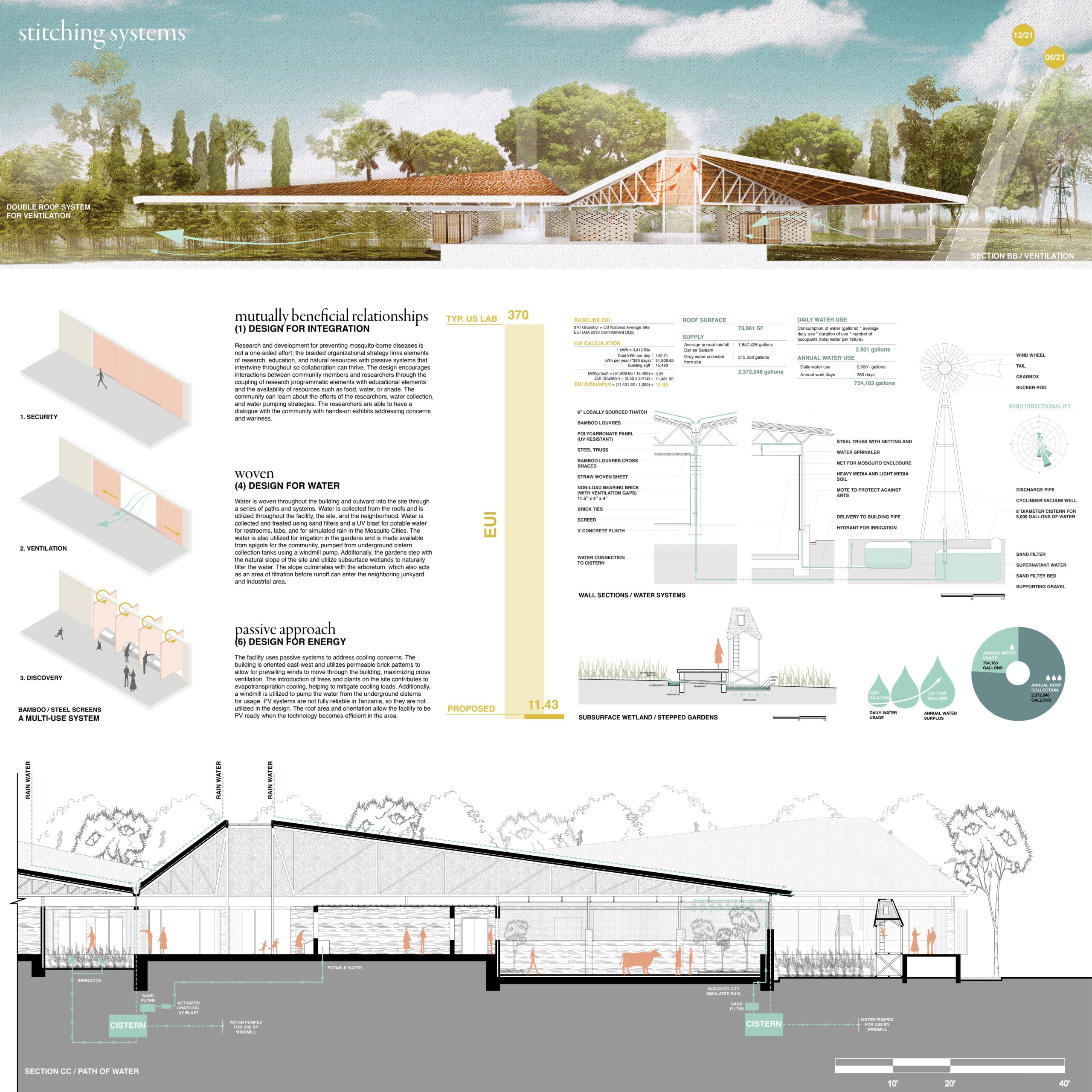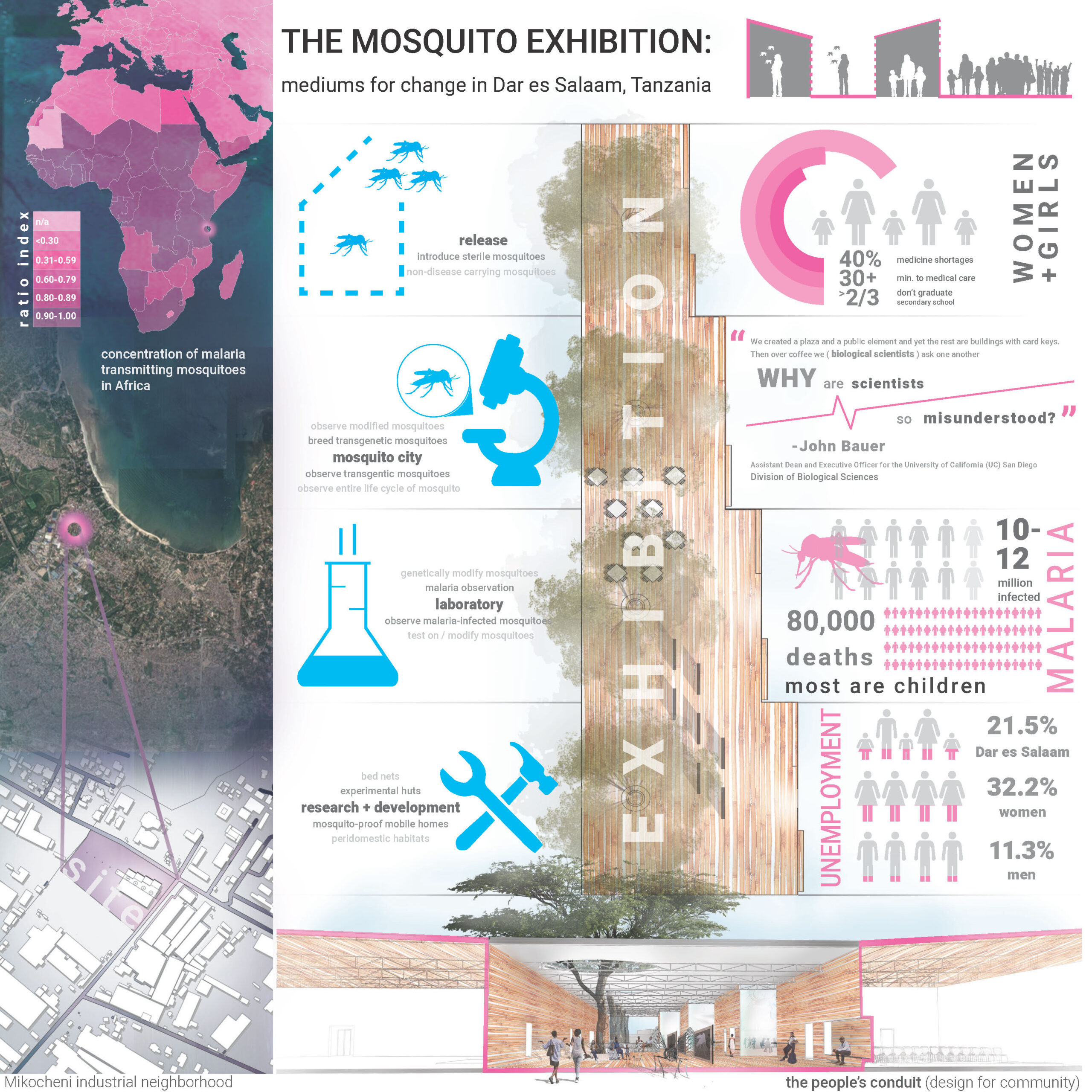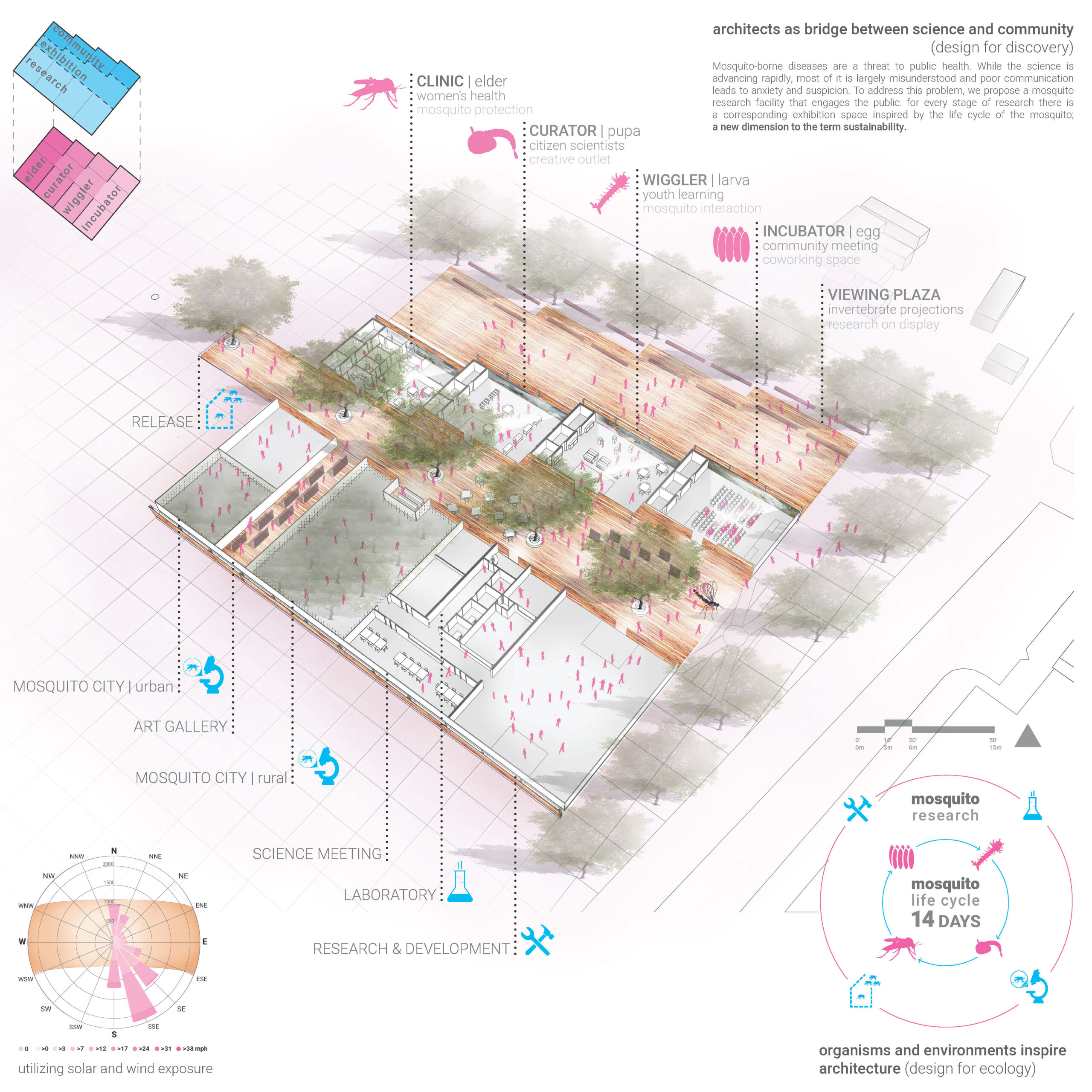Design Studio 2018 | University of Oregon
Focusing on an urban site in Sub-Saharan Africa (in the Buguruni Ward of Dar es Salaam, Tanzania), student teams will develop architectural scale design proposals for a mosquito research facility that combines spaces of scientific experimentation – with a particular focus on disease ecology – with spaces of outreach and education. A key challenge will be to achieve a balance between the need to contain dangerous phenomena (e.g. pathogens, disease vectors, contaminants) and the desire to enhance community engagement. What is exciting is that architectural and other designers are seldom brought to the table to work with scientists and others in considering how elusive, complex and controversial phenomena related to mosquitoes can be investigated safely and creatively.
Opportunities for innovation abound.
Students will spend the first week of fall quarter engaged in basic research and literature review (getting everyone up to speed). Five student teams of three students each would then spend the next several weeks looking at different spatial/programing aspects of the facility (a way of breaking this down into manageable chunks to begin). They would work along a continuum of containment to release in the urban environment, with one team contending with safe handling of dangerous phenomena, another team looking at release, and the three other teams looking at activities and spaces that fall somewhere in between. The five “activities/efforts” and their associated “degrees of containment” and “programs/space types” below (my first rough pass) would anticipate the eventual project brief/design problem statement that student teams would work on for the remainder of the quarter.












